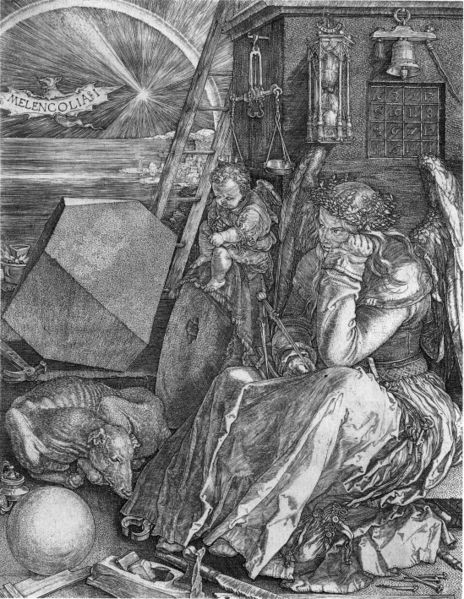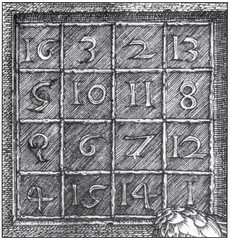

Albrecht Dürer’s Melencolia I might brood about thwarted creativity, but it contains one of the most brilliant magic squares in all of European art.
You can reach the sum of 34 by adding the numbers in any row, column, diagonal, or quadrant; the four center squares; the four corner squares; the four numbers clockwise from the corners; or the four counterclockwise.
As a bonus, the two numbers in the middle of the bottom row give the date of the engraving: 1514.



